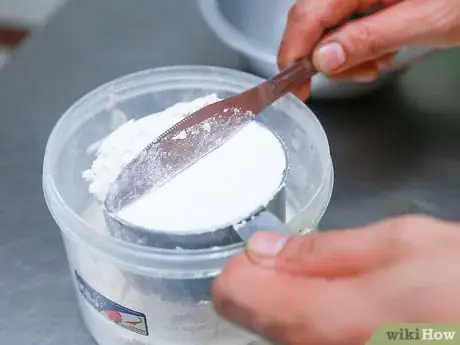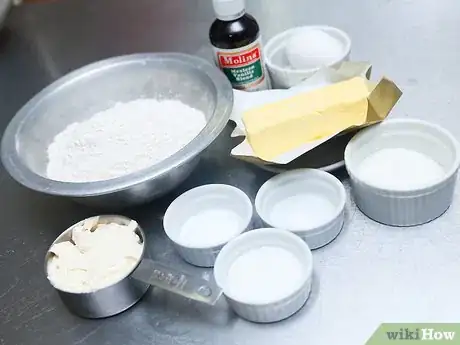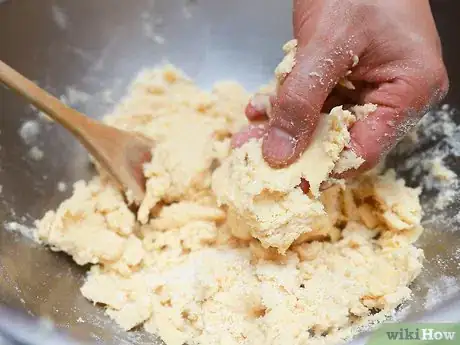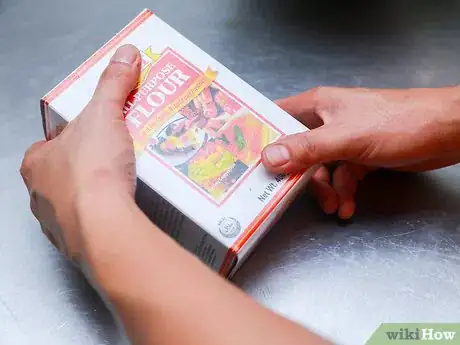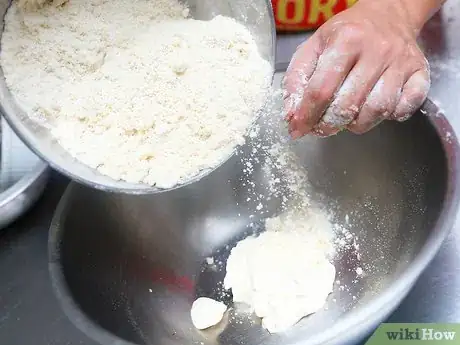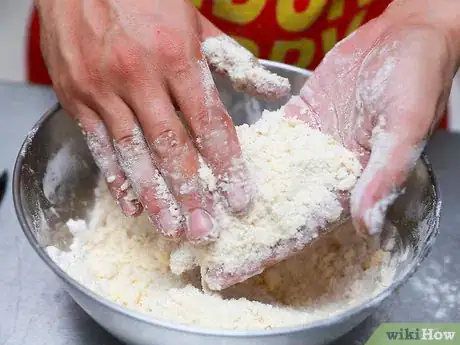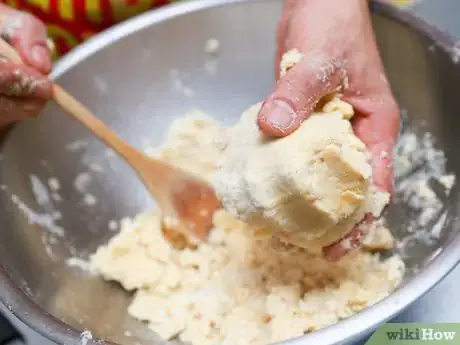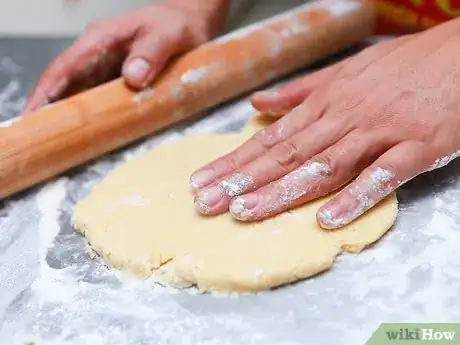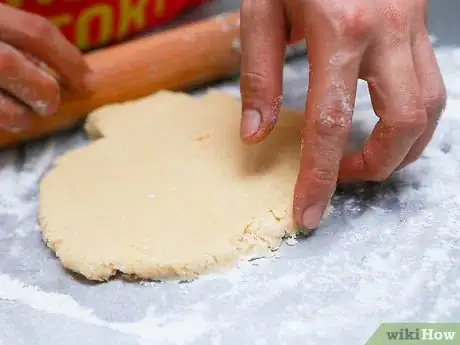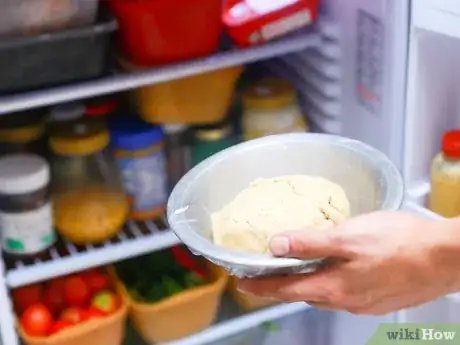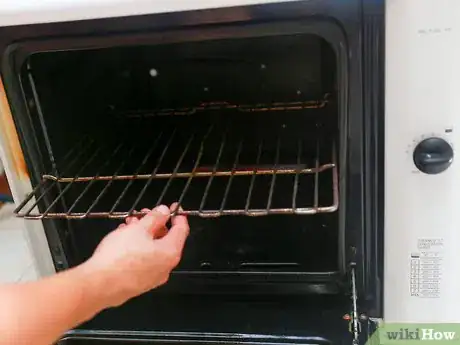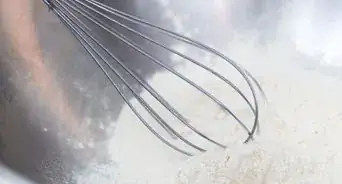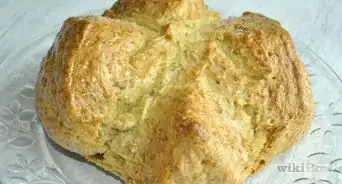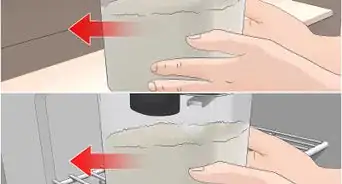This article was co-authored by Maria Short. Maria Short is a Baker and the Owner of Short N Sweet Bakery & Cafe in Hilo, Hawaii. With over 24 years of experience, she specializes in specialty desserts and wedding cakes. She graduated from L’Academie de Cuisine’s Pastry Arts Program with honors and studied at Baltimore International Culinary College. In 2019, Maria competed in the 6th season of the Food Network’s Holiday Baking Championship. In 2010, she had a cake named one of “America’s Most Beautiful Cakes” by Brides magazine.
wikiHow marks an article as reader-approved once it receives enough positive feedback. In this case, several readers have written to tell us that this article was helpful to them, earning it our reader-approved status.
This article has been viewed 159,998 times.
Homemade scones are so delicious, but sometimes they turn out flat, seemingly for no reason. What gives? Don't worry—we're here to help you troubleshoot what went wrong with your scone recipe so it doesn't happen again. Check out the tips below to learn how to make perfect scones every time.
Steps
Checking the Ingredients and Texture
-
1Make sure that you are using the right amounts and proportions. Did you measure everything? Is the recipe correct – sometimes misprints can affect a recipe; do a quick search online for similar recipes to double check the ingredients and measurement amounts.
- Consider using a little bit more baking soda in your next batch.
-
2Make sure that you are using the right ingredients. Baking soda and baking powder may sound similar enough to use interchangeably, but they are really two different things when it comes to baking. If the recipe calls for baking powder, make sure that you are using that and not baking soda and vise-versa.Advertisement
-
3Check the texture of the dough. Ideal scone dough is wet and somewhat sticky. If the dough is too dry, the scones won't rise and will be crumbly. On the other hand, if the scones are too wet, they won't rise either, and will be too tough and chewy once baked. Don't hesitate to tweak the amounts and proportions to get the right texture. Things like temperature and humidity can affect a recipe and its ingredients.
-
4Check the flour you used. Accidentally using all-purpose (plain) flour in place of self-rising (self-raising) flour or not adding the rising agent to plain flour can cause flat scones.
-
5Make sure that your ingredients are fresh. This includes things like yeast, baking soda, and baking powder. Over time, these ingredients lose their effectiveness, and will prevent your scones from rising. Here's a few ways you can tell if your baking soda and baking powder are fresh:[1]
- Add 1/2 teaspoon of baking soda to a few tablespoons of distilled vinegar in a cup. If the mixture fizzes, the baking soda is fresh.
- Add 1/2 teaspoon of baking powder to a few tablespoons of warm water in a cup. If the mixture fizzes, the baking powder is fresh.
-
6Try to use cold butter next time. If your butter was too warm, it could be a reason as to why your scones did not rise. Try using cold butter next time. The cold butter will melt while you bake the scones, and the steam it releases will help the scones rise.[2]
Checking the Mixing and Cutting Process
-
1Try adding the dry ingredients into the wet ingredients. Sometimes, the order in which you mix things can help the scones rise, or keep them from doing so in the first place. Usually, adding the dry ingredients to the wet ones, and mixing them until they are just combined, will give you light, fluffy scones.[3]
-
2Rub the butter into the dough. Don't squeeze or squash it. This will over-work the butter and cause it to warm up. You want the butter to remain cold and a little lumpy so that it can melt and release steam in the oven.[4]
-
3Mix the dough just enough so that the ingredients hold together. Try not to knead dough for too long. Over-mixing scone dough can cause the air bubbles to disappear. This will give you tough, flat scones.
-
4Don't roll the dough too flat before you cut it. The dough should be between 3/4 and 1 inch (1.91 to 2.54 centimeters) high. Making the dough thick will help the scones rise better.
-
5Check the edges of the cut dough for smoothness. Is the dough rough and jagged around the edges you cut? Chances are, you twisted the cookie cutter. Try pushing the cutter straight down into the dough and then lifting it out. This will give you a nice, clean edge and help the scones rise evenly.
- If the edges are jagged or smooshed, the scones won't be able to spring up and rise.
-
6Don't let the dough sit for too long. When your scones come out too flat, try to remember how long you let the dough sit before you placed it into the oven to bake. The longer you get the dough sit before baking it, the less your scones will rise. Try to bake the dough as soon as you finishing kneading and rolling it out.
- Letting the mixture sit too long will cause the gas bubbles from the leavening agent to disappear. These gas bubbles are what help the scones rise.
Checking Temperature and Baking Times
-
1Make sure the oven is preheated. Scones need to be baked as soon as the dough is made. If you let the dough sit while you wait for the oven to heat up, the gas bubbles caused by the baking powder will go away. Preheat your oven before you put the scones in; this way, everything will be ready and at the right temperature.
-
2Make sure that you are using the right temperature. In general, scones should be baked at a higher temperature than most other pastries. Using too low of a temperature will prevent the scones from rising.
- If the recipe called for a lower temperature, try baking the scones at 400°F (205°C) next time, and see if that helps.
-
3Check the altitude. Most recipes are made for those living up to 2,000 to 3,000 feet (609.6 to 914.4 meters) above sea-level. If you live higher than that, you will need to adjust your recipe in order to get the scones to bake properly. Here are some tips for you to try:[5] [6]
- Use less baking soda or baking powder. Use no less than 1/8 teaspoon.
- Use less sugar.
- Add 1 to 2 more tablespoons of your liquid.
- Add more flour. Start with 1 tablespoon.
- If you are between 4,000 and 6,000 feet (1219.2 and 1828.8 meters), increase the temperature by 15-25°F.
- If you are higher than 6,000 feet (1828.8 meters), use the original temperature, but bake the scones one to three minutes longer.
-
4Keep the door closed. Did you open your oven while the scones were baking to peak at them? If so, this might be why your scones didn't rise. Ovens are very sensitive, and opening the door causes the temperatures to drop for a little bit. Scones need to be baked at a high, consistent temperature in order to rise; if the temperature is too low, even for a moment, the scones may not rise.
Expert Q&A
-
QuestionWhat is the secret to a good scone?
 Maria ShortMaria Short is a Baker and the Owner of Short N Sweet Bakery & Cafe in Hilo, Hawaii. With over 24 years of experience, she specializes in specialty desserts and wedding cakes. She graduated from L’Academie de Cuisine’s Pastry Arts Program with honors and studied at Baltimore International Culinary College. In 2019, Maria competed in the 6th season of the Food Network’s Holiday Baking Championship. In 2010, she had a cake named one of “America’s Most Beautiful Cakes” by Brides magazine.
Maria ShortMaria Short is a Baker and the Owner of Short N Sweet Bakery & Cafe in Hilo, Hawaii. With over 24 years of experience, she specializes in specialty desserts and wedding cakes. She graduated from L’Academie de Cuisine’s Pastry Arts Program with honors and studied at Baltimore International Culinary College. In 2019, Maria competed in the 6th season of the Food Network’s Holiday Baking Championship. In 2010, she had a cake named one of “America’s Most Beautiful Cakes” by Brides magazine.
Baker Make sure that your oven is at least 375 °F (190 °C), and that your batter or dough gets in the oven as quickly as possible after you've formed your scones.
Make sure that your oven is at least 375 °F (190 °C), and that your batter or dough gets in the oven as quickly as possible after you've formed your scones. -
QuestionWhat is the best ratio of butter to flour?
 Amy273Community AnswerUsually, a ratio of 2 parts butter to 3 parts flour is good.
Amy273Community AnswerUsually, a ratio of 2 parts butter to 3 parts flour is good. -
QuestionWhy are my scones flat and crumbly?
 QamarTop AnswererIt's possible you added too much sugar. Sugar makes scones crumbly. You could have baked them for too long or used a high temperature, which caused them to flatten.
QamarTop AnswererIt's possible you added too much sugar. Sugar makes scones crumbly. You could have baked them for too long or used a high temperature, which caused them to flatten.
Warnings
- Always follow recipes carefully when baking, as even minor changes can disrupt the baking process. After all, baking is chemistry in the kitchen!⧼thumbs_response⧽
References
- ↑ Huffington Post, How to Test Baking Soda and Baking Powder for Freshness
- ↑ https://www.handletheheat.com/how-to-make-perfect-scones/
- ↑ https://sallysbakingaddiction.com/scones-recipe/
- ↑ https://sallysbakingaddiction.com/scones-recipe/
- ↑ Epicurious, High-Altitude Baking Recipes and Tips
- ↑ Betty Crocker, Baking and Cooking at High Altitudes
About This Article
If your scones won’t rise, there are some tricks you can try with the next batch. Always use self-rising flour or a rising agent when you make scones, which will help them rise in the oven. You should also make sure the dough is wet and a little sticky. If it's too dry, your scones won't rise properly, so tweak the ingredient proportions as needed. Only mix the dough until the ingredients hold together, since over-mixing it can make your scones come out flat. Roll the dough to 3/4-inch thick to help your scones rise. Once you’ve made your dough, bake the scones as soon as possible, otherwise, they might come out flat. Bake your scones at 400 degrees Fahrenheit and keep the door closed while they bake For more tips, including how to measure the right amounts of your ingredients, read on!
